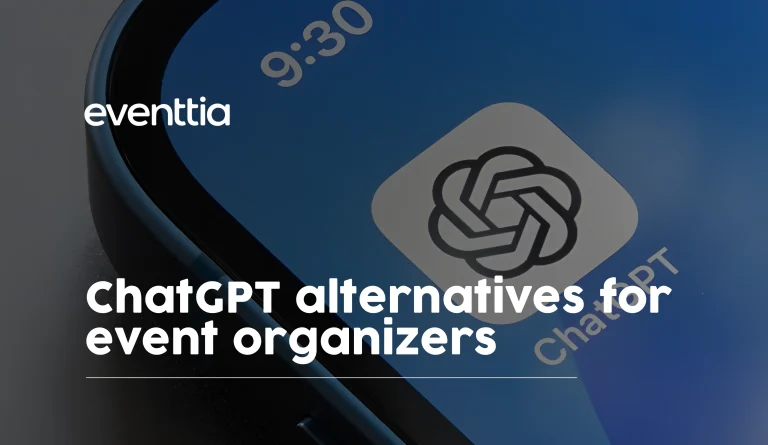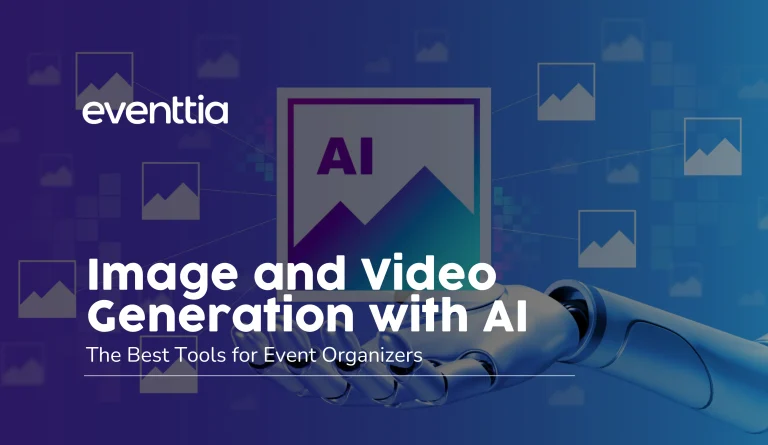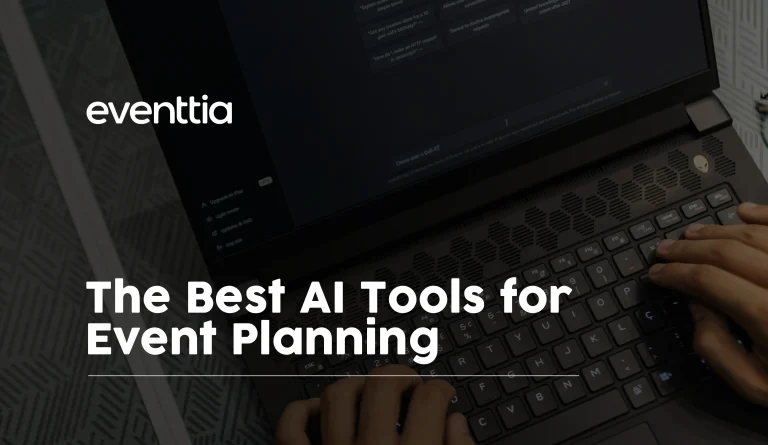An event website should be a critical part of marketing any event and can literally make or break the event’s success in attracting and engaging attendees.
A great event website should be a single source of information for its prospective attendees, encouraging them to find out more about the event and ultimately getting them to register for the event.
In this article, we will discuss all you need to know about creating a perfect event website to help your event and your business succeed.
Event Website: The Concept
It’s important to understand that a proper event website is more than simply a website with an online registration function embedded.
Online registration is obviously an important element of an event website, allowing prospective attendees to easily register for the event online and 24/7. For smaller events, we can typically get away with a simple website with basic online registration functions, but you’ll need a more complete and dynamic event website for larger and complex events.
A proper event website has three basic functions:
- Providing data and information (prospective) attendees may need about the event.
- Attracting website visitors with strong branding and marketing best practices so they’ll be convinced to register for the event.
- Providing an easy and reliable way for visitors to register for the event, ideally without leaving the website. The registration process should be made as easy as possible to minimize the abandonment rate.
What Makes a Good Event Website
A good event website should be:
→ Mobile-friendly
Google and the other search engines now prioritize mobile-optimized websites on their search results pages. If people can’t find your website on these search engines, you won’t get optimal traffic, beating the purpose of the event website.
Not to mention, more and more people are exclusively browsing the internet (including shopping, booking appointments, and registering for events) on their mobile devices.
Make sure the event website is optimized for mobile devices and is mobile-responsive (it can resize itself and readjust its layout for different devices.) When developing your website, try to test on as many devices with different sizes as possible.
→ Branded
Pretty self-explanatory, the website visitors must recognize that the website belongs to you (the event organizer company) or your event as soon as they’ve visited the website.
You’ll need to have strong and distinctive branding for your event (or event organizer) and strategically place the branding elements (logo, usage of brand color schemes, imagery, etc.) on the website.
The more unique and distinctive the branding is, the more effective the website will be in attracting and converting visitors.
→ Informative
The event website must function as a central hub of information for prospective attendees and attendees and contain all the relevant information surrounding your event: venue, date & time, speakers, how to register, ticket prices, and so on.
→ Readable
Above anything else, the event website’s content must be accessible and easy to read. Pay attention to font type and size, layout, and other UX (User Experience) factors to ensure readability.
Creating the Perfect Event Website: Step-by-Step Guide
Below, we share a step-by-step guide on how you can create the perfect event website to help you capture the attention of your prospective attendees, encourage them to find more information on the website, and finally convert them to register for your event.
Let us begin with the first step.
Step 1: Know and understand your prospective attendees
A great website—not just an event website—is one that answers its target audience’s needs.
Thus, the first step you should take is to identify and understand your website’s target audience (in most cases, your event’s prospective attendees.) The better you understand your website’s target audience, the more likely you can create a website that meets their needs and answer their problems.
There are many different approaches you can use to identify your event’s target audience, but the best approach is to target the most ideal audience that will help your event achieve its goals, for example:
- If the main goal of your event is to generate leads or build brand awareness, you can target those who are similar to your previous event’s audience profile or your closest competitors’ audience profile.
- If your event is designed for improving customer engagement or driving sales (i.e., product launch), then you should target the product’s ideal customers.
- If the event is designed to maximize retention, then you should target your existing subscribers.
Here are some tips on how you can identify your event’s target audience
- Involve your internal stakeholders (managerial, sales team, etc.) and ask for their insights on whom they would benefit from attending the event. You can also ask external event partners to gauge whom they are expecting to attend.
- Use Google Analytics and other analytics tools to discover your website visitors’ demographic data to learn more about your existing audience.
- Use social media analytics tools to gain information about who is engaging with your brand on these social networks.
Once you’ve successfully identified who your target audience is, the next step is to gather as much information as you can about these targeted attendees: their motivations for attending, reasons that may prevent them from attending, and so on. Again, the better you understand this target audience, the better you can design your event website.
A good approach is to conduct surveys or interview your existing customers to identify their needs and what they expect about your event.
Step 2: Design your website while optimizing for branding
While website design is a very deep subject on its own, here are some key areas to consider when designing your event website for success:
- Consistent branding: above, we’ve briefly discussed the importance of having a strong brand identity as the foundation of marketing your event. It’s crucial to keep branding consistent throughout the website, as well as between your website and all other touch points. Focus on consistency in logo, color scheme, imagery, and brand voice/tone.
- Intuitive user experience: make sure your website has clear and obvious navigations and buttons, so your visitors can explore the event website intuitively.
- Clear CTAs: strategic placement of clear CTAs (call to action) can be very effective in motivating your customers to convert. Use bold-colored CTAs in a highly visible location, and the CTA must be immediately obvious.
- Avoid clutter: make sure your website is easily scannable. Use white space effectively and establish a visual hierarchy (i.e., large and centered headlines are considered more important than another element that is smaller.)
- Use contrasting colors: use enough contrasts so that people with visual impairments can still discern text content from background colors. Also,
Another important consideration is to make sure your website’s brand is immediately recognizable. Place your company logo (and event logo), as well as other important brand elements, clearly and prominently on your website.
The idea is to provide your site visitors with all the information they may need upfront. Keep the homepage clean and simple, and if you need to discuss more details, provide links to another page.
Make your homepage a dedicated page to let visitors know who you are, what you do, and what events you are hosting.
Step 3: Optimize content for brand authority
A great event website is one that can:
- Attract a huge number of qualified traffic (quality traffic that fits your audience profile
- Can effectively engage this traffic, so they stay as long as possible on the website
- Convert its visitors so they’ll register for your event
To achieve these three, the best way is to build authority by aiming to get more high-quality backlinks from relevant websites. Getting more inbound links is also important for SEO purposes, which will also help in generating more traffic to the website.
There are many link-building strategies you can adopt to get more high-quality backlinks to the website, but here are some of the most effective ones:
- Above anything else, there’s no shortcut to getting more backlinks than consistently publishing high-quality and relevant content
- Look for guest posting opportunities from relevant websites. Link back these guest post articles to your website
- Write well-written press releases and pitch them to relevant media and influencers. Include links to your website within this press release
- Create rich content with unique/valuable information that will be shared by others (i.e., research reports, infographics, etc.)
Link building and building brand authority, in general, are long-term in nature, so expect that they will take some time to achieve. Consistency is key, so especially focus on regularly developing and publishing quality and relevant content.
Step 4: Improve UX and usability
The easier and more intuitive your website is to use, the more satisfied your visitors will be, which will lead to more time spent on the page and, ultimately, higher conversion and event registration rates.
Here are some tips to improve website usability:
→ Technical optimizations for usability:
- Fixing broken links: broken links (links that are no longer working) will not only potentially ruin the user experience but can cause your site’s search engine ranking to be demoted. Make sure to check for broken links regularly (tools like Ahrefs or SEMRush can help in this purpose.)
- Ensuring optimal server uptime: hosting services with low server uptime may result in frequent downtime for the website, which will ruin the user experience. Make sure to choose a high-quality and reliable web hosting service.
- Mobile responsiveness: as discussed above, optimizing your website for mobile devices is crucial in today’s mobile-first environment. Make sure your website can be consumed in different screen sizes and at different bandwidth speeds.
→ Site structure:
- Make sure the website is structured well, and there are clear guidelines on how to use every function of the website. The website should be kept simple and clutter-free unless it’s absolutely necessary to do otherwise.
→ Purpose-driven:
- All elements included on the website must have a purpose: every button, every menu choice, and even every paragraph of each content. Again, this is important to avoid clutter and to optimize the website for readability.
→ Credibility:
- Last but not least, credibility is another important pillar of website usability, but unfortunately, it is often overlooked by many website designers. Make sure to make the event organizer company’s address and contact information clearly available on the website. If possible, also provide information on who in the company is responsible for content publication.
Step 5: Improve page speed
Today’s internet users simply expect websites to load fast, period.
According to Google, more than 50% of visitors abandon a website that loads in more than 3 seconds (over standard internet connectivity.)
So, if you want to retain visitors and maximize engagement on your event website, you need to optimize the website’s speed. Here are some tips on how:
- Invest in a reliable hosting service, preferably in a dedicated hosting plan for optimal server response time
- Limit image, gif, and video content. Even if you need to publish them, make sure they are compressed and formatted correctly. These digital assets can require a lot of bandwidth when they are not properly optimized.
- Minify and combine code files
- Reduce the number of plugins and/or extensions used by the event website unless they are absolutely necessary.
- Make sure to regularly monitor your event website’s speed performance and make adjustments accordingly.
Step 6: Enable online registration
Online registration is a crucial functionality that should be there on any event website, and yet the actual implementation can be easier said than done.
Not to mention, integrating online payment processing on the website may significantly slow down the website, and failed payments can also be a major issue.
We’d recommend integrating an all-in-one event management solution with built-in ticketing/registration functionality to streamline the whole registration process. With Eventtia in place, you don’t need any experience or expertise to ensure a reliable and fully-functional 24/7 online registration feature on the event website.
Step 6: Include social proofs
Another effective way to encourage conversions is to include social proofs like testimonials and reviews from previous attendees, sponsors, partners, speakers, and other parties who have participated in your events.
Despite various forms of marketing tactics we can adopt, the classic word-of-mouth strategy is still one of the most effective for gaining new attendees.
Wrapping Up
While the idea of creating an event website may seem overwhelming at first, it is actually pretty straightforward, thanks to the vast amount of technologies we have today.
Above, we have shared the step-by-step guide to building an effective event website, as well as some actionable tips on how to attract more visitors, engage these visitors so they’ll stay longer, and ultimately convert them into event registrants.
We hope our guide has provided you with the knowledge you need to start building your event website right away.
Discover how Eventtia helps world-leading brands digitize and scale their events
Learn moreShare





